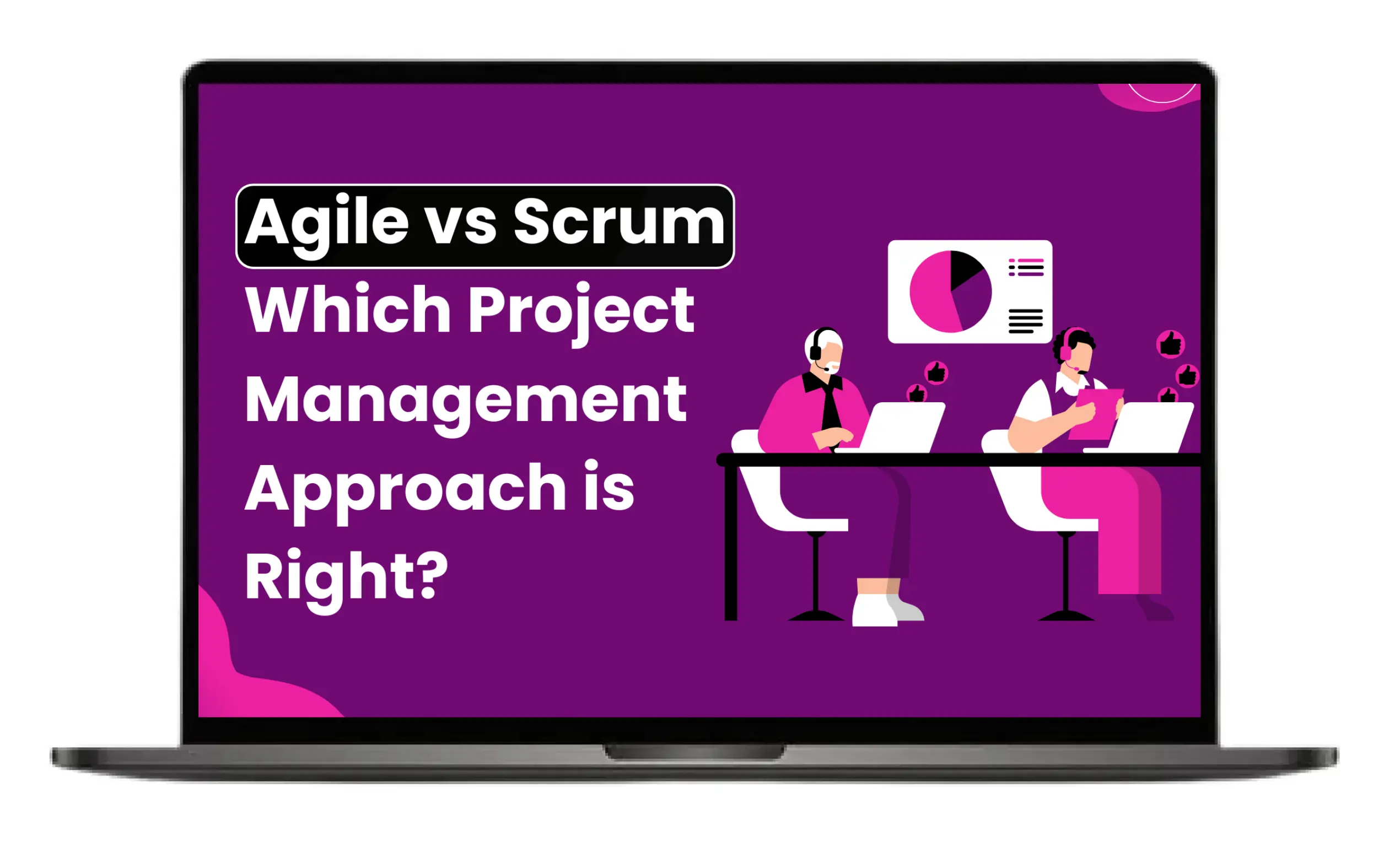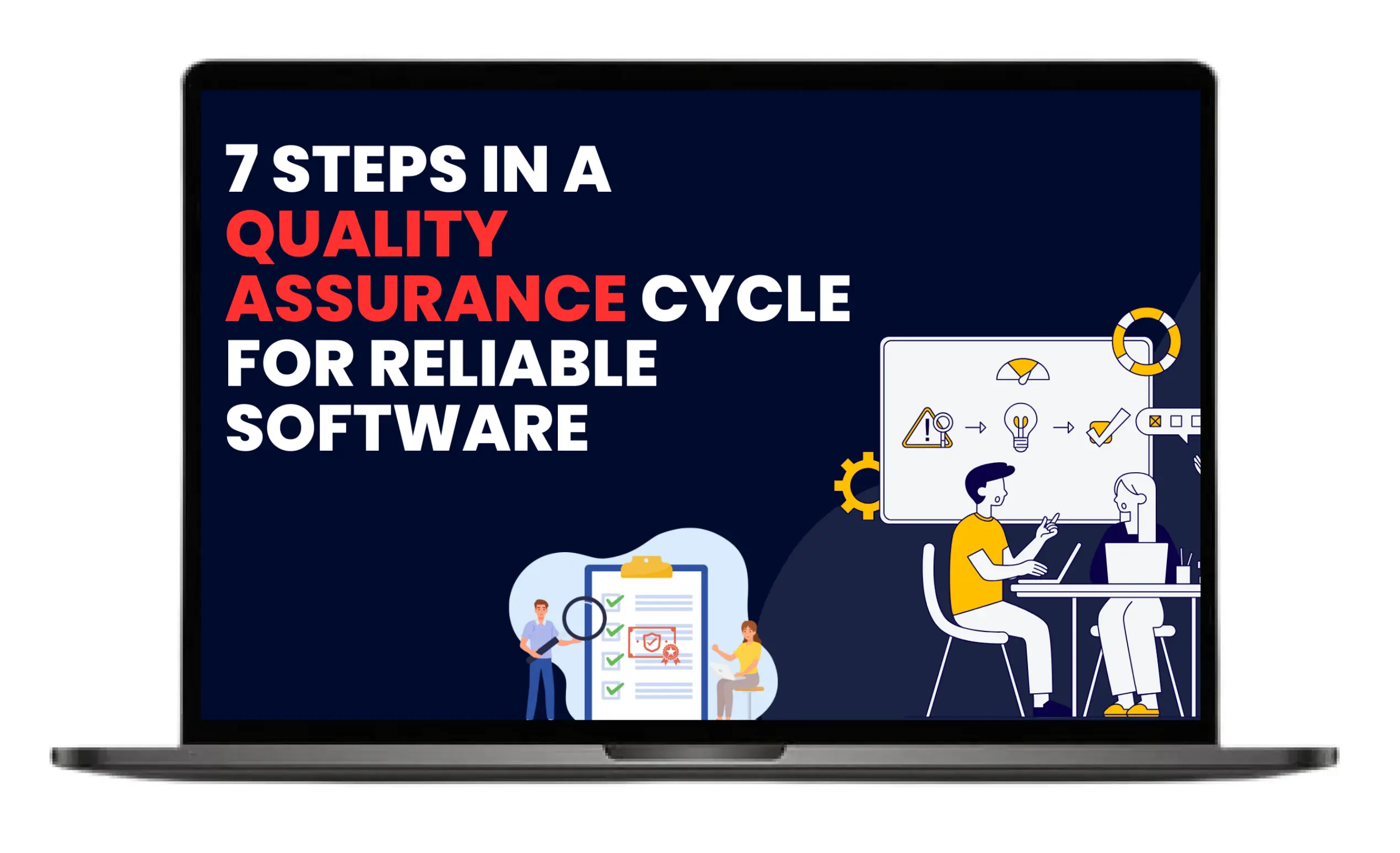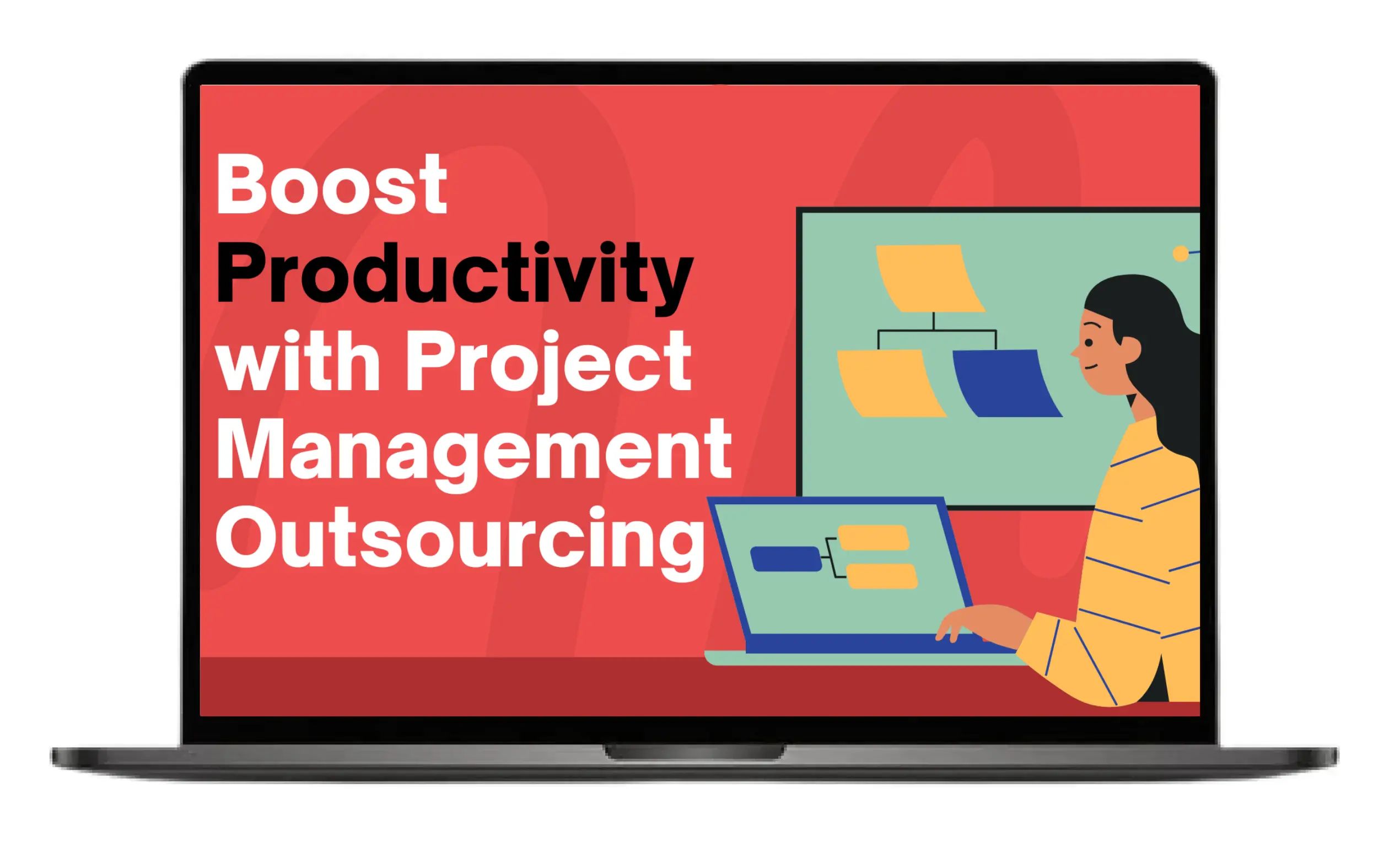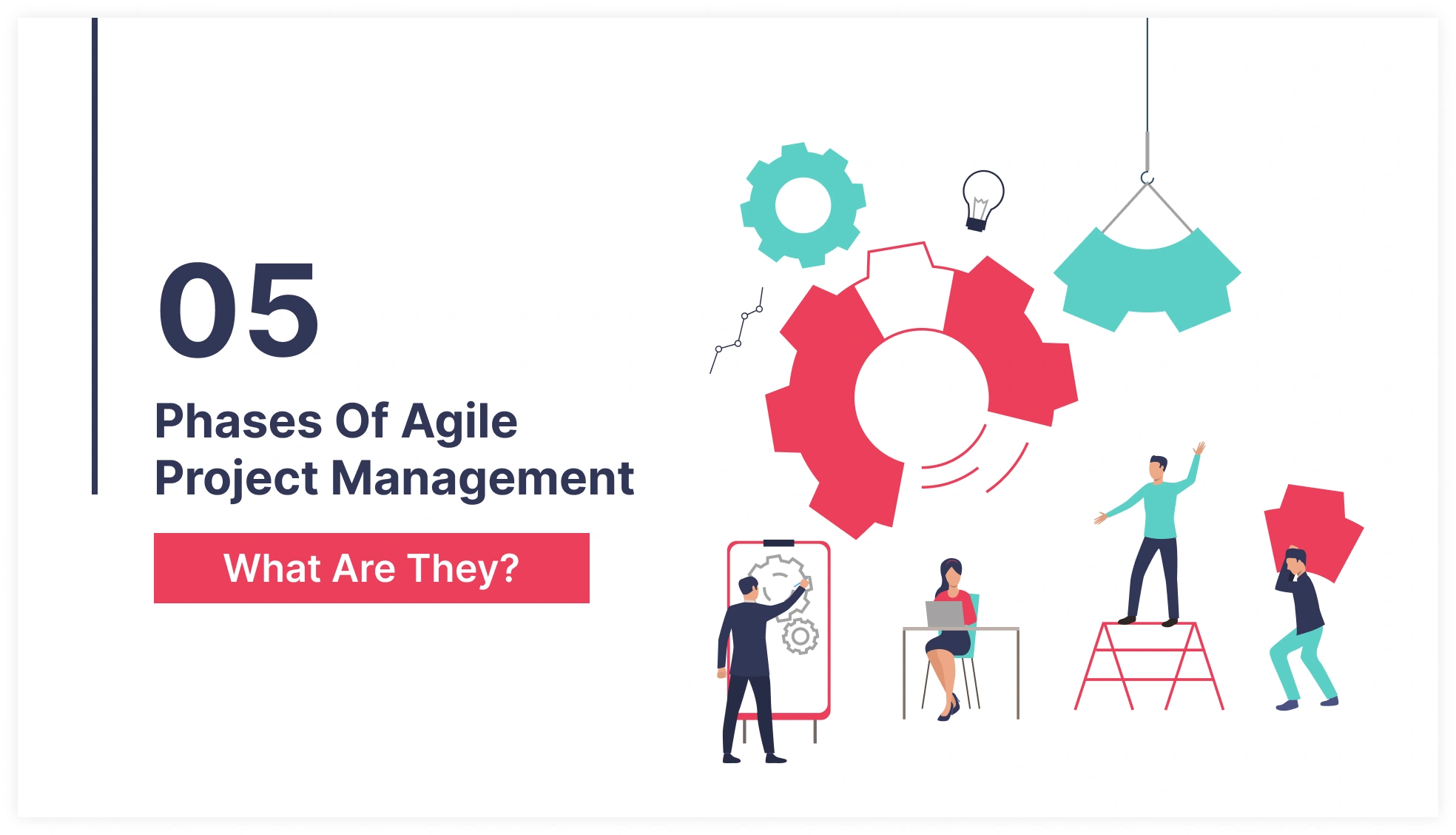
Rigid plans and strategies are often a recipe for failure. The world we live in is changing at a fast pace and it requires flexibility. That’s where Agile project management (APM) can help. 71% companies who adopted agile reported enhanced visibility and 37% increase in project success rate. This shows the importance of adopting agile project management.
Whether you are a startup or an established business, agile project management is your key to success. We will help you understand the phases of agile project management and tools to measure APM success.
What is Agile in Project Management?
Agile project management is an iterative framework that focuses on flexibility and continuous improvement. It breaks the project into small tasks called sprints. It improves the flexibility to change, quick delivery of product, and direct communication.
Principles of Agile Project Management
Agile is based on four main principles:
- It values interactions and individuals over tools and processes
- It prioritizes collaboration with customer over contract negotiation
- It focuses more on working software
- It prefers flexibility to change over rigid plans.
How is APM different from Traditional Methodologies?
Traditional methodologies such as the Waterfall Model work in a linear manner. It means these models move to the next stage once the previous stage is completed. They follow a rigid plan which is less adaptable to changes. On the other hand, agile works in small sprints. This enhances flexibility in the project and continuous improvement based on customer feedback.
What are 5 Phases of Agile Project Management?
Following are the five phases of APM:
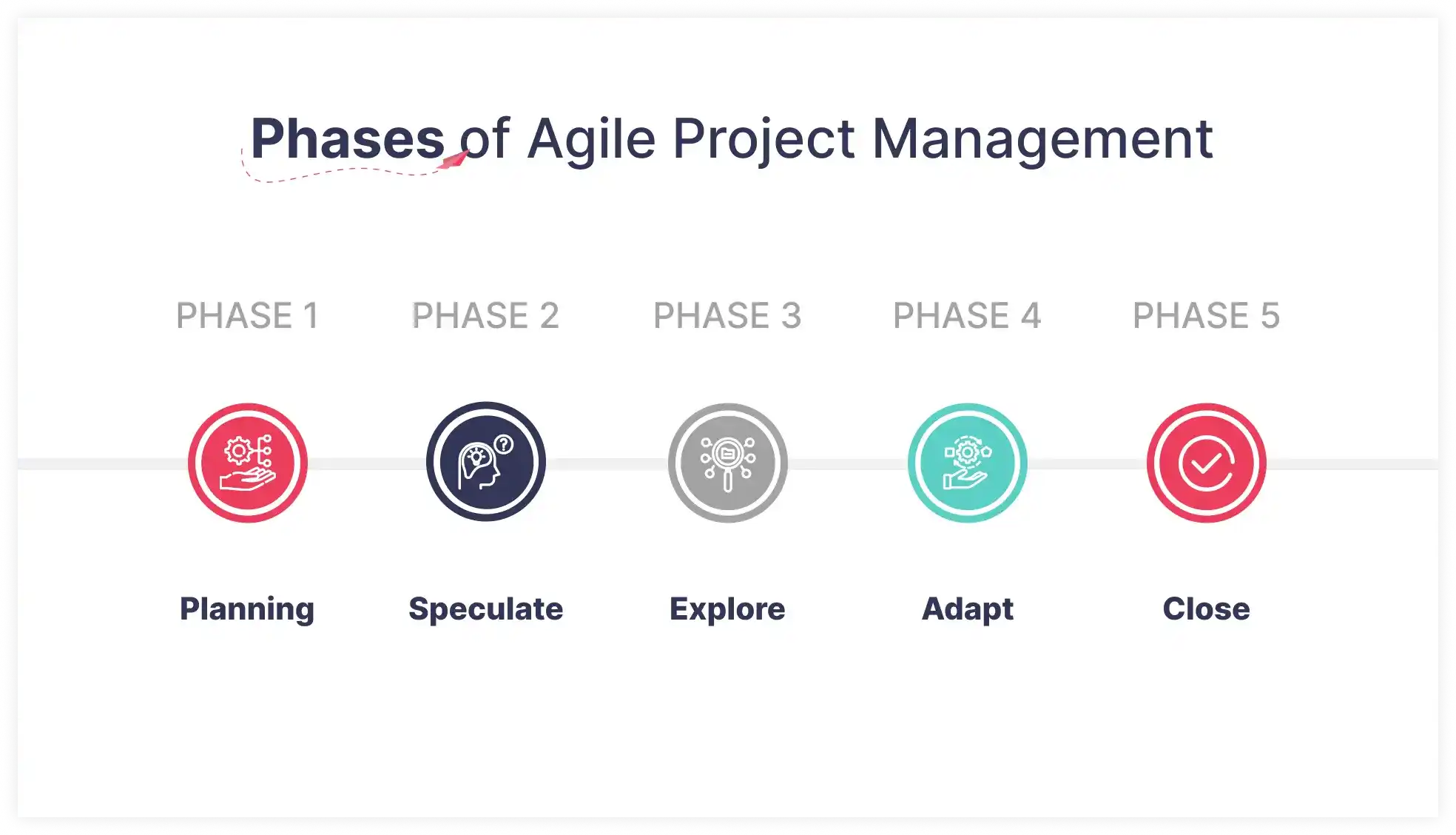
- Planning
- Speculate
- Explore
- Adapt
- Close
Planning Phase: Turning Ideas into a Clear Agile Vision
It is the foundation of agile project management. Here the idea transforms into an actionable plan. It is the stage where all stakeholders align on what the final product will look like, success criteria, and who are the targeted users.
The objective of this phase is to create success criteria which defines the outcomes and progress metrics. It also aims to map out all stakeholders and their influence. This phase also creates a vision statement which explains what is the value and purpose of this product.
There are three steps in this stage:
- Elevator Pitch Workshops: These help you explain the product idea in one sentence.
- Product vision box: It helps explain how the company will market the product.
- Product Roadmap: It highlights the timeline of the product.
You can use these tools and templates for envision phase:
- Lean Canvas: It is one page model which summarizes the key assumptions
- Project Charter Lite: It is a simple charter which highlights key objectives, stakeholders, and scope.
Speculate Phase: From Epics to User Stories
This phase converts the product goals into prioritized backlog. It also executes the sprint to carry out the work. The development teams divide the epics (large stories) into small and manageable sprints. Every sprint has its own acceptance criteria. It ensures that every sprint is testable and the project stays on track from the start.
Teams can use following techniques to ensure that most valuable features are delivered first:
- MoSCoW (Must-have, Should-have, Could-have, Won’t-have)
- Story mapping
- WSJF (Weighted Shortest Job First)
During speculate phase, you can use these standards:
- Definition of Ready (DoR): It ensures that the user story is ready for the development.
- Definition of Done (DoD): It confirms when work is completed
These tools can help you during this phase:
- INVEST criteria: It is used to evaluate the user stories
- MVP scoping: It defines the viability of product
- Risk Burnout Charts: They can help to reduce delivery risk.
Explore Phase: High-Performance Sprints in Action
In this phase, teams actually implement agile. Teams enter into the action phase and prioritize user stories. They do sprint planning where they select user stories from the product backlog. Additionally, they break these user stories into small sprints. Moreover, they also perform daily standup or daily scrum in which they engage in 10-15 minutes meetings. They explain previous day tasks and doables for today.
For testing and continuous integration, developer opt following during explore phase:
- Automated testing pipelines: It immediately detects the bugs and release them
- Test-Driven Development (TDD): It enhances the quality of codes.
Following tools help in explore phase:
- Kanban boards
- Burndown charts
- Velocity tracking
Adapt Phase: Embracing Empirical Control
This phase corresponds to the main principle of agile which is responding to feedback through flexibility. The teams reflect and learn due to continuous feedback and align the project with the user needs. Here, teams undertake sprint review where they discuss with stakeholders and give a demo of completed work and feedback. They discuss future steps for the project.
Additionally in the adapt phase, the team performs a sprint retrospective. It is an internal team meeting to evaluate the process and identify the areas of improvement. Agile teams are ready for the mid-flight changes. They use the feedback to refine their plans, timelines, and expectations.
Teams use the following tools in this phase.
- Agile tools such as lead time, sprint velocity, and throughput
- Cumulative Flow Diagrams (CFD) to identify work in progress
Close Phase: Deliver, Celebrate & Institutionalize Learning
It is the final phase of the agile project cycle. Here, teams discuss the readiness criteria with the stakeholder. They undertake release planning to discuss documentation and deployment of the product. They develop roll back plans to avoid issues in deployment.
Here teams develop lesson-learned logs to identify the areas of improvement. Teams deliver the product knowledge to support and maintenance teams.
Steps for Implementing Agile Approach
There are 5 steps in implementing the Agile Approach. These include:

- Define (Set the goal)
- Design (Create the plan)
- Build (Create what the plan calls for)
- Test (Verify the final product)
- Release (Make the product available to the client)
What are the Common Pitfalls Across All 5 Phases (and How to Avoid Them)?
There are few common agile pitfalls that can undermine the whole value of agile methodology. Here is how you can avoid these pitfalls:
“Water-Scrum-Fall” Anti-Pattern
It happens when teams mix the agile with traditional waterfall methods in the wrong way. They start with planning everything but during the process they follow scrum practices such as daily stand ups and sprints. After this, they go back to the same rigid methodologies without any customer feedback.
You can avoid it by practicing continuous planning, frequent discussion with stakeholders, and delivering in small increments.
Skipping Retrospectives
Retrospective is a regular meeting where teams discuss what went wrong and how to improve it. However, teams may skip retrospectives which leads to ignorance of feedback. They miss chances of improvement and small issues turn to bigger ones.
You can avoid skipping the retrospectives by making them a part of the sprint. You can make them time boxed and honest discussions for improvement.
Overloaded Backlog
It occurs when the backlog is filled with too many vague and outdated user stories. This creates confusion for the team to decide which user story. They also waste time in understanding irrelevant tasks. Moreover, due to overloaded backlogs, teams do not focus on important user stories.
You can avoid this by continuously refining the backlog and writing user stories using INVEST criteria.
What are the 5 C's of Agile?
The APM focuses on the 5 Cs. Here are the 5’Cs of the APM:
- Customer
- Collaboration
- Coordination
- Communication
- Continuous Improvement
What are Common Misconceptions About APM?
The most common misperception about the APM is that it lacks structure. But in reality, the APM moves in structure. The phases like Envision and Speculate offer flexibility while maintaining a clear structure and direction. The second most common misconception is that it is only software development-oriented. In reality, APM can be used in a wide range of industries and projects.
Conclusion
Agile project methodology is a framework that can ensure success of your project. By following its five phases, Planning, Speculate, Explore, Adapt, and Close, you can create products efficiently. It also ensures that you follow the user's needs and deliver products quickly. At Red Star Technologies, we can help you implement agile in your business. Whether you are new to agile or trying to refine your project, we can help you achieve success.








